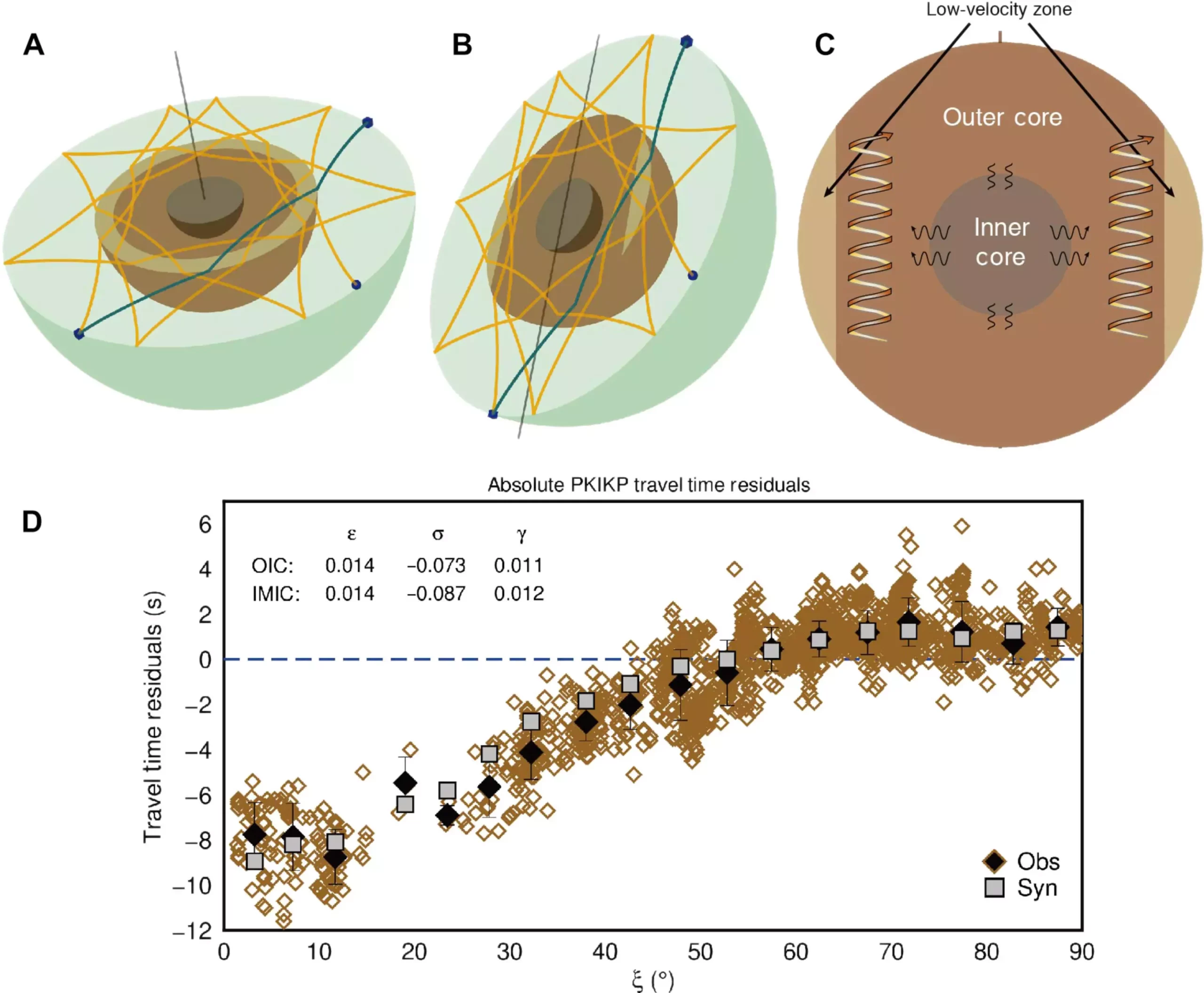Scientists from The Australian National University (ANU) have made a groundbreaking discovery in Earth’s liquid core, uncovering a doughnut-shaped region located at low latitudes and parallel to the equator. This newly found structure sheds light on the dynamics of our planet’s magnetic field and raises important questions about the composition and behavior of Earth’s core.
The doughnut-shaped region within Earth’s liquid core sits at the top of the outer core, where it meets the mantle. Seismologists at ANU found that seismic waves in this region travel slower compared to the rest of the liquid outer core. This peculiar structure, according to Professor Hrvoje Tkalčić, is confined to the low latitudes and has a distinct doughnut shape. While the exact thickness of the region is yet to be determined, researchers believe it extends several hundred kilometers beneath the core-mantle boundary.
Unlike traditional methods of seismic wave observation that focus on signals generated by earthquakes within the first hour, the ANU scientists took a different approach. By analyzing waveforms several hours after the earthquake origin times, they were able to identify similarities and make this significant discovery. This new method provided more comprehensive coverage of Earth’s outer core, allowing researchers to study the path of seismic waves and their travel times more accurately.
The discovery of the doughnut-shaped region offers valuable insights into the dynamics of Earth’s magnetic field. Dr. Xiaolong Ma emphasized the importance of multidisciplinary efforts in understanding the mysteries of the outer core. The outer core, primarily composed of liquid iron and nickel, plays a crucial role in generating Earth’s magnetic field, which protects our planet from solar winds and radiation, sustaining life on Earth.
The presence of low seismic speeds within the liquid core implies a high concentration of light chemical elements in the newly discovered region. These elements, combined with temperature variations, contribute to the movement of liquid in the outer core, influencing the behavior of the magnetic field. Professor Tkalčić highlighted the significance of understanding the composition of the outer core in predicting the future of Earth’s magnetic field.
The recent discovery of the doughnut-shaped region within Earth’s liquid core opens up new avenues for research and exploration. By delving deeper into the mysteries of the outer core and its impact on Earth’s magnetic field, scientists can gain a better understanding of our planet’s dynamics and potentially uncover more hidden structures and phenomena within the core. This groundbreaking study by ANU researchers marks a significant milestone in the field of geophysics and paves the way for further discoveries in the future.


Leave a Reply